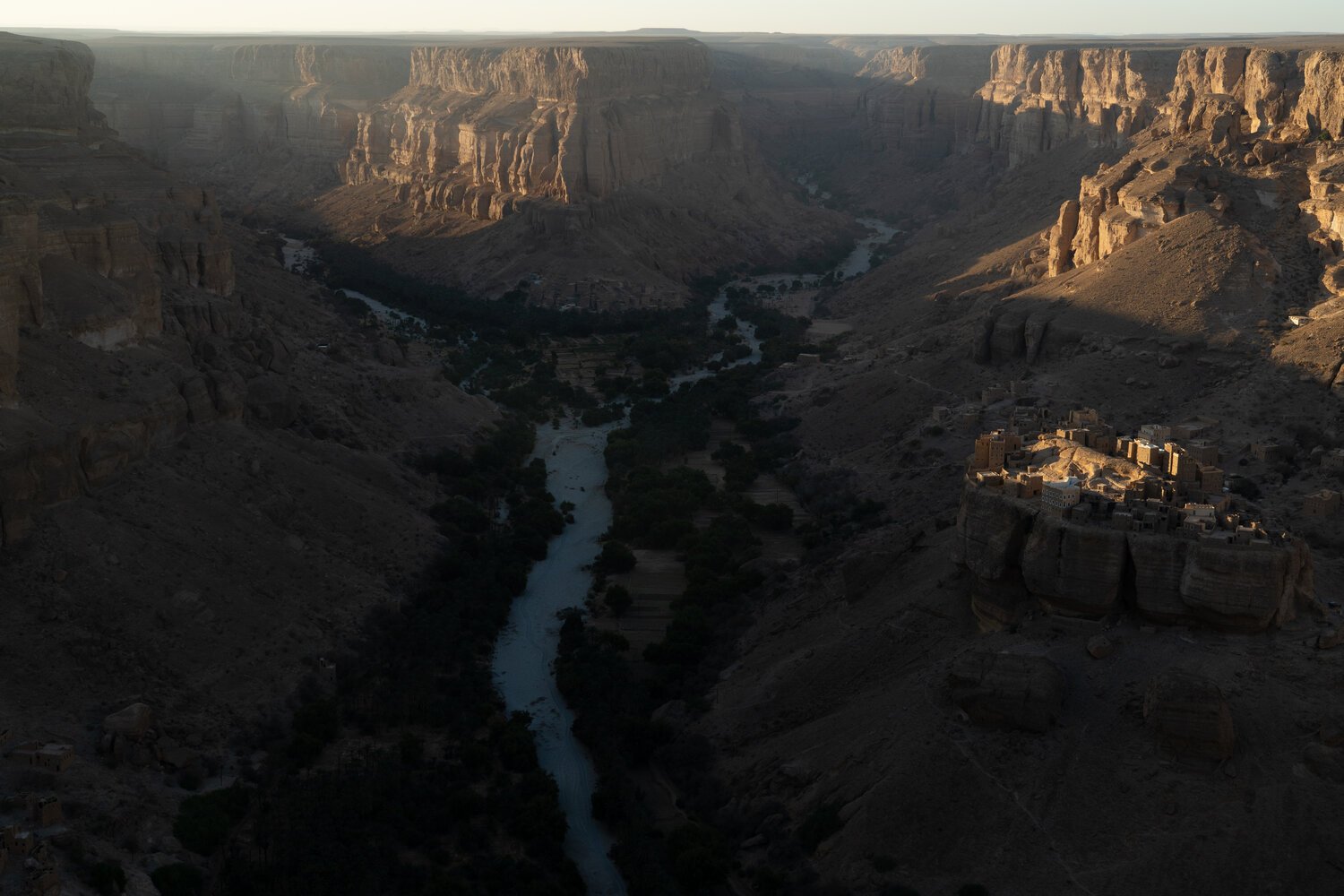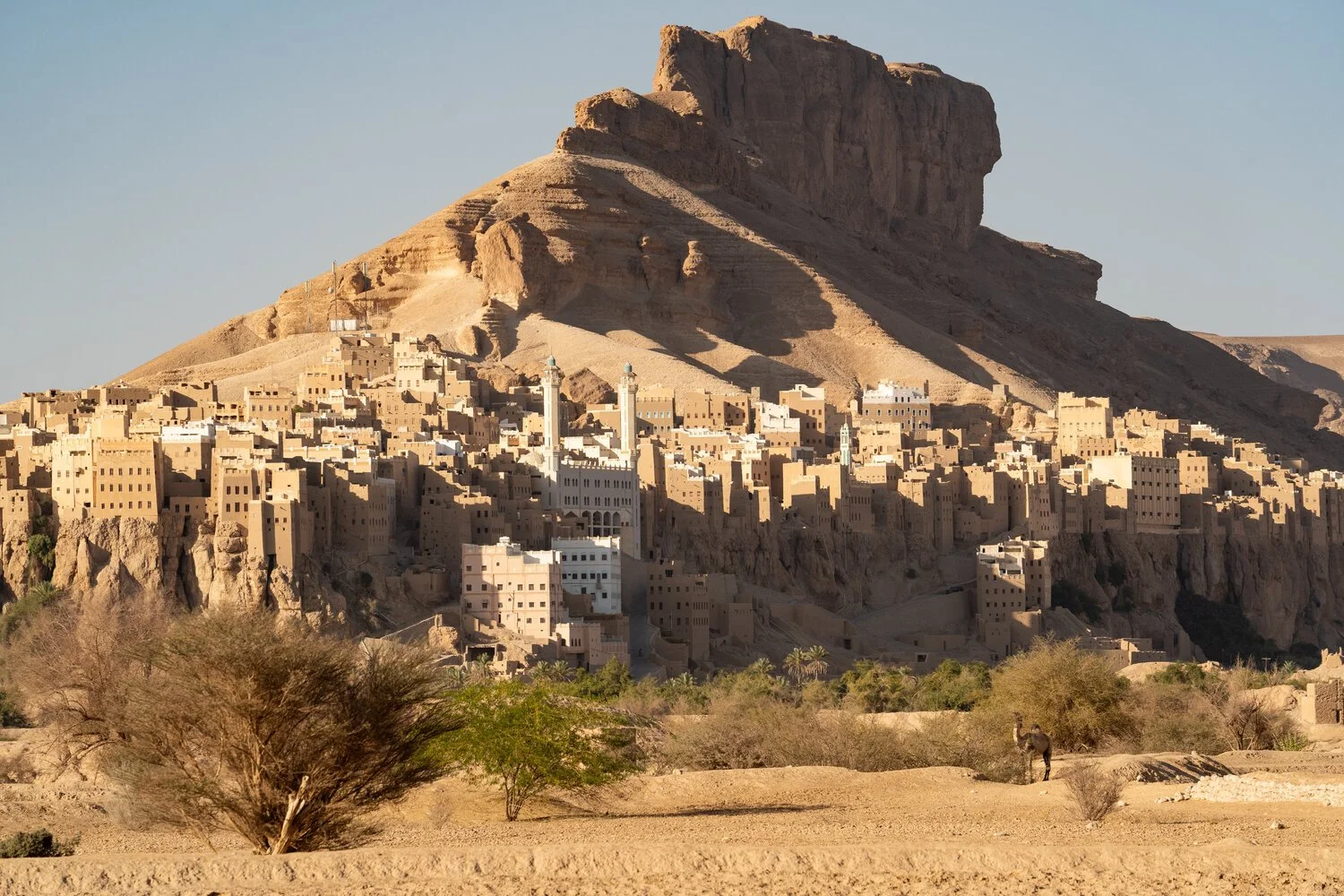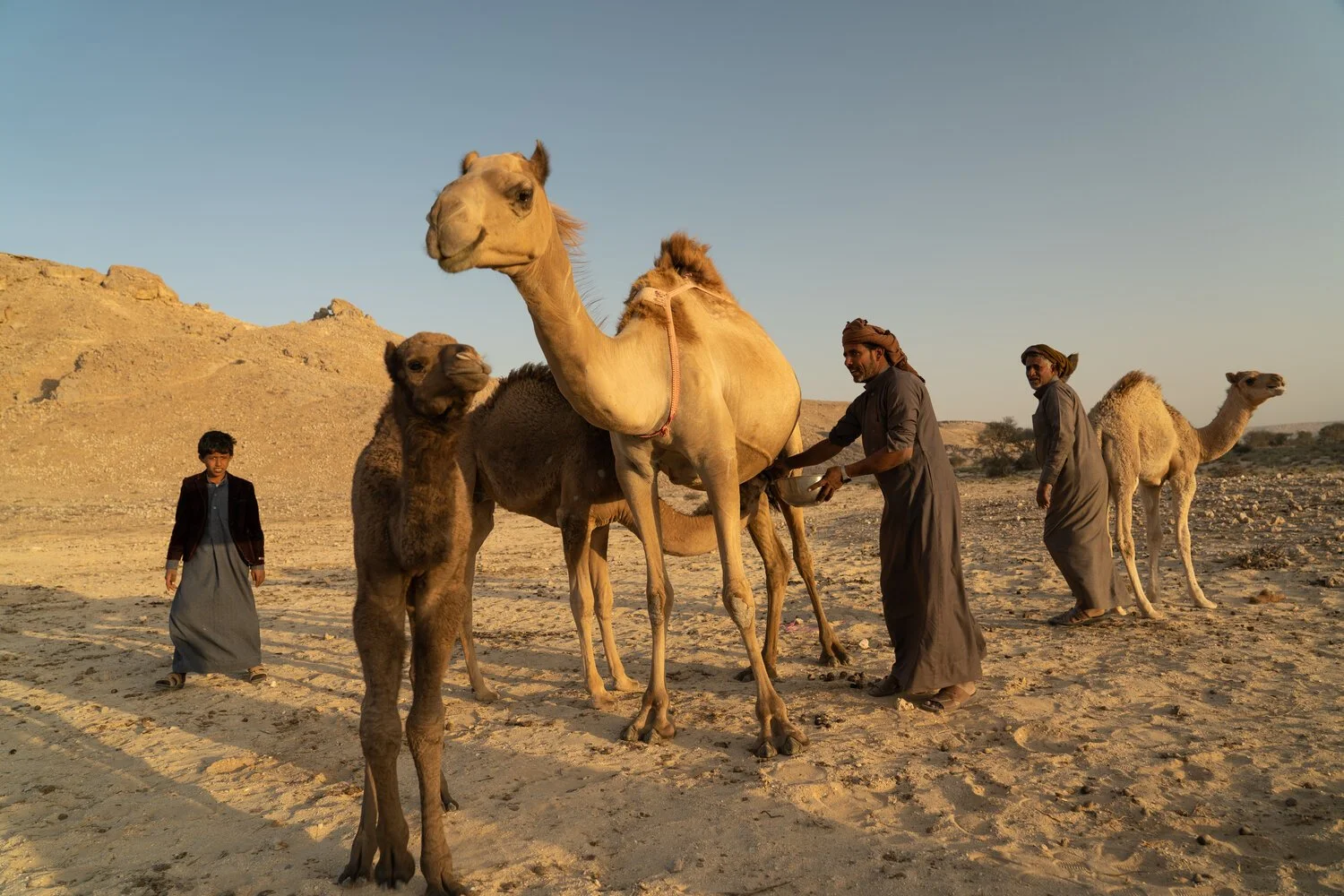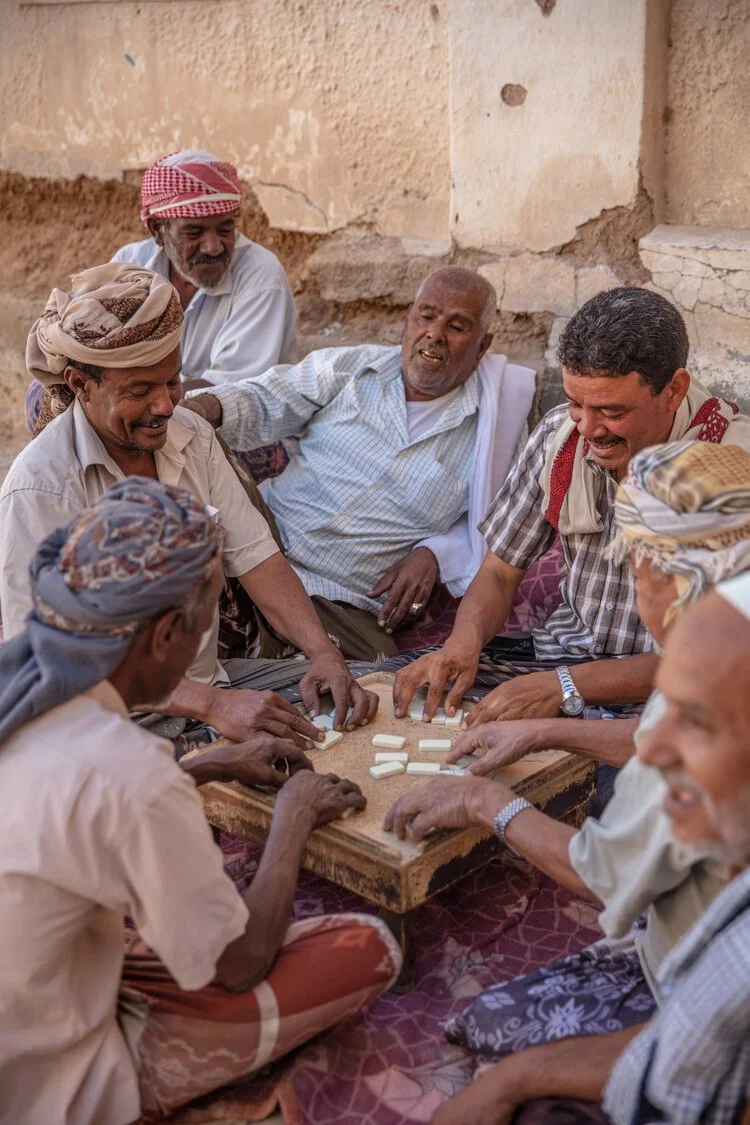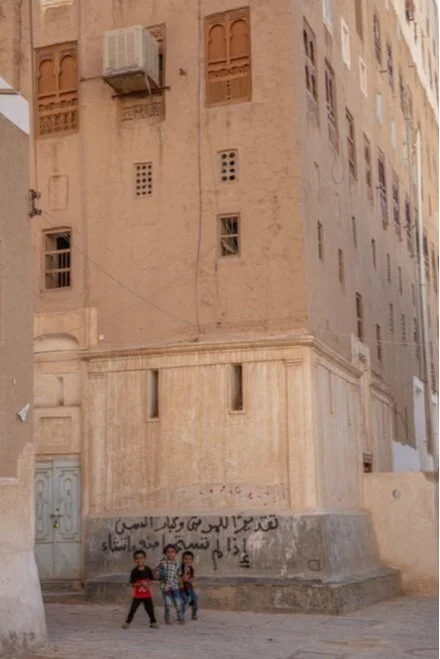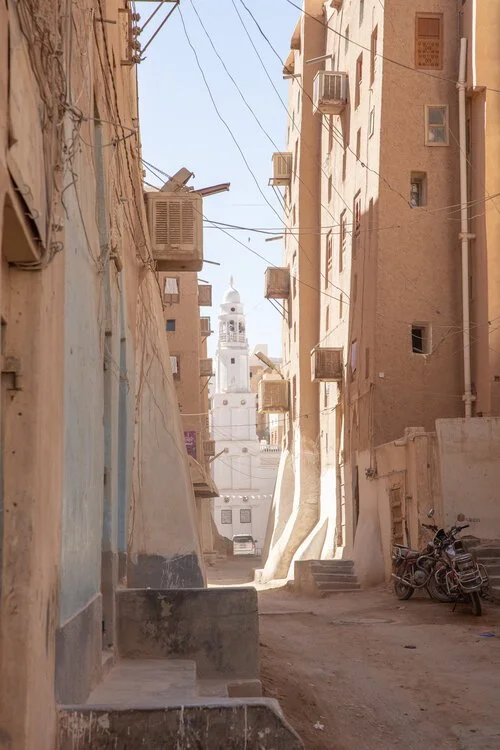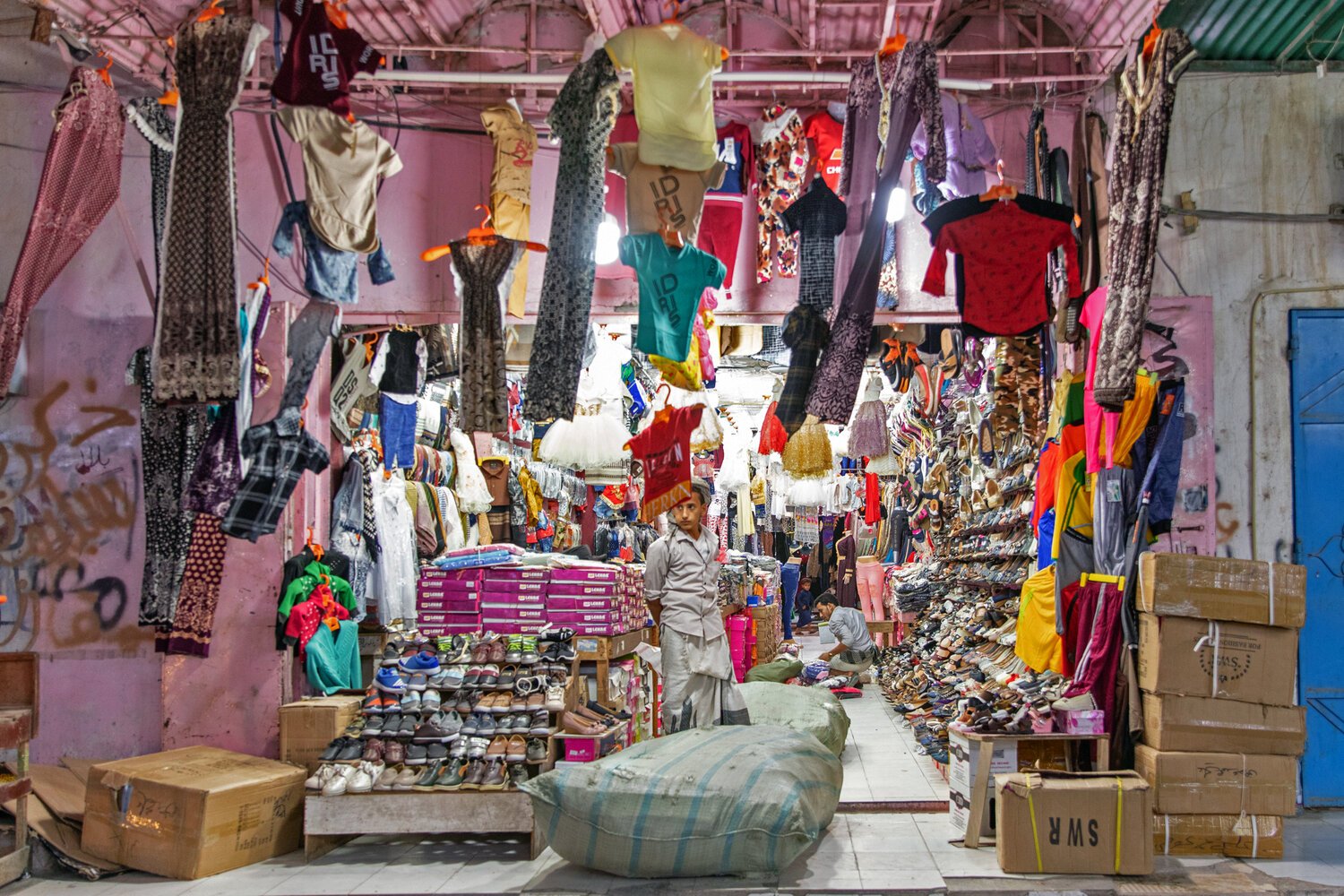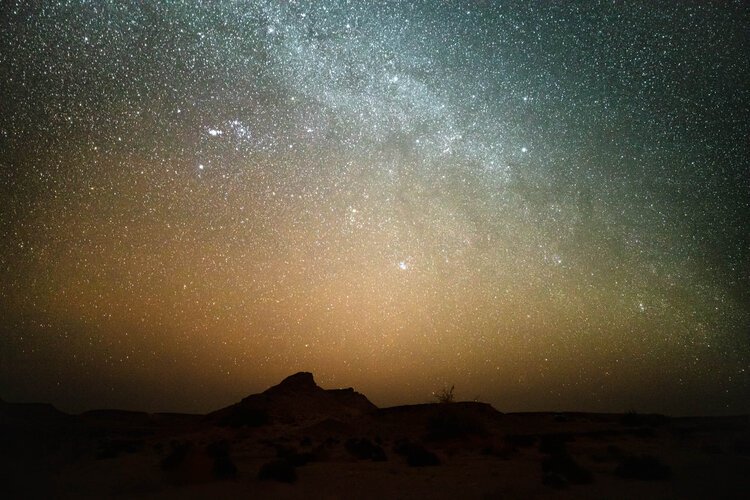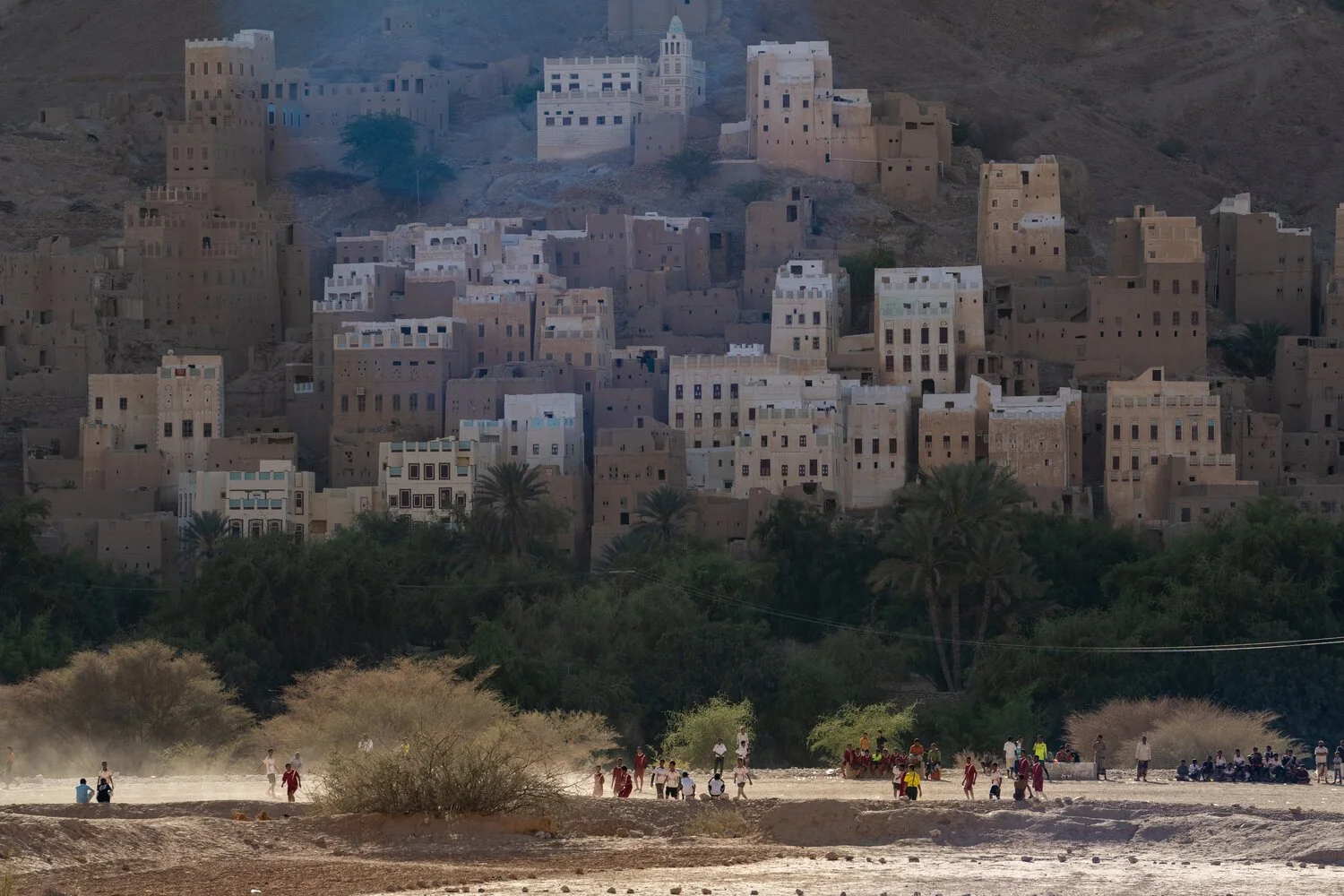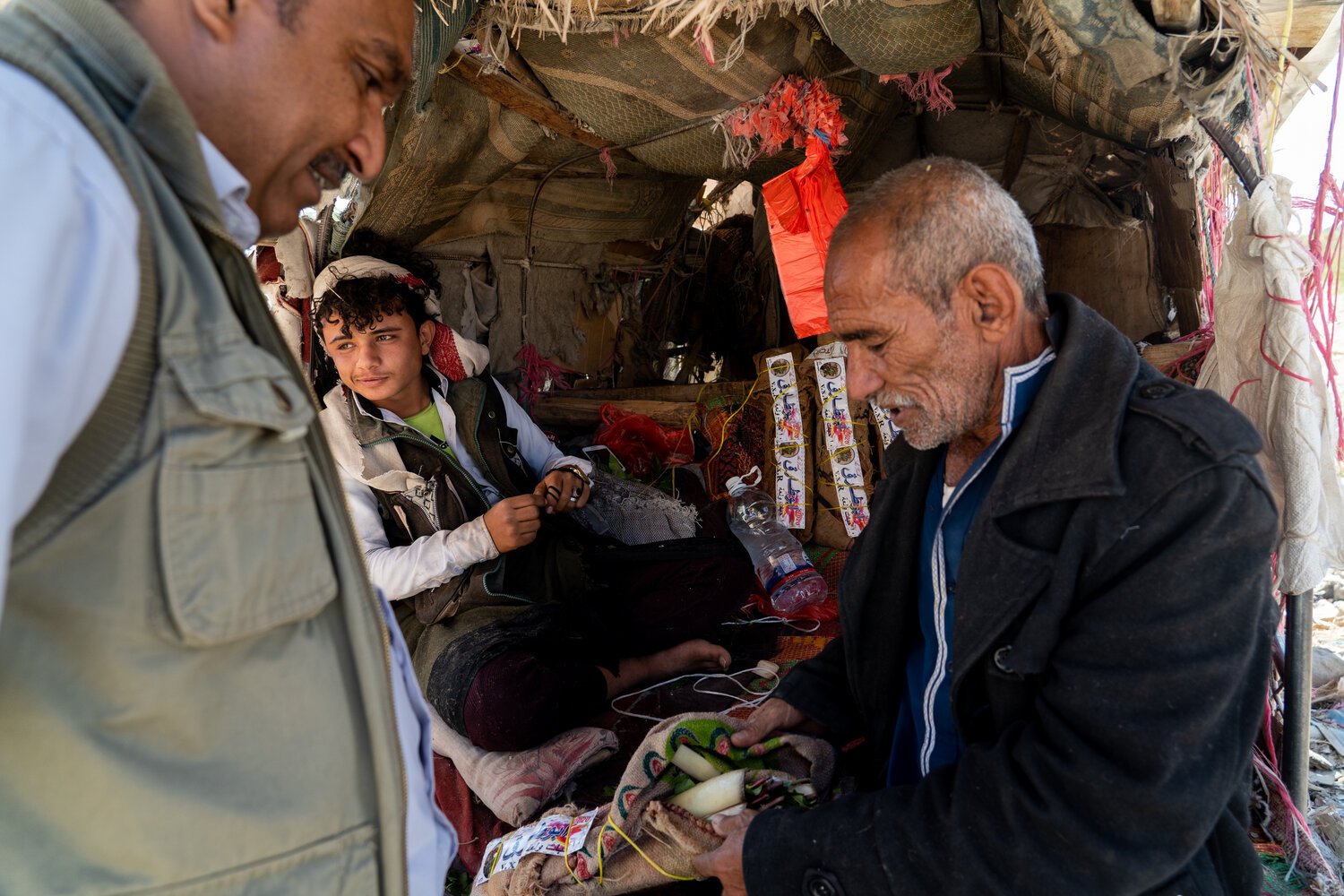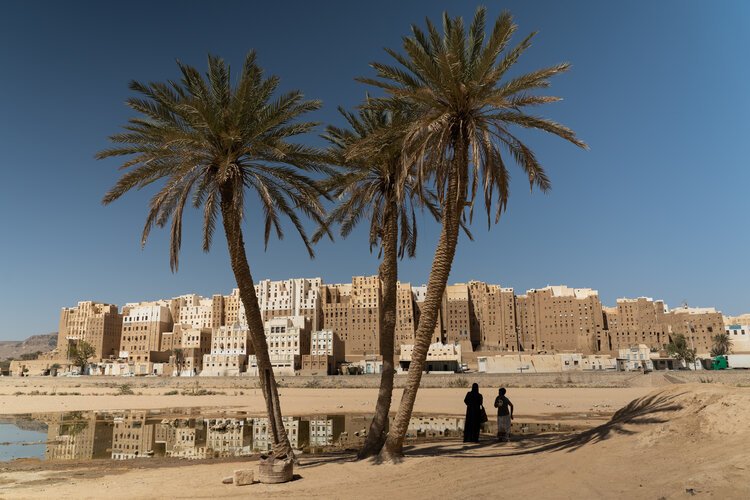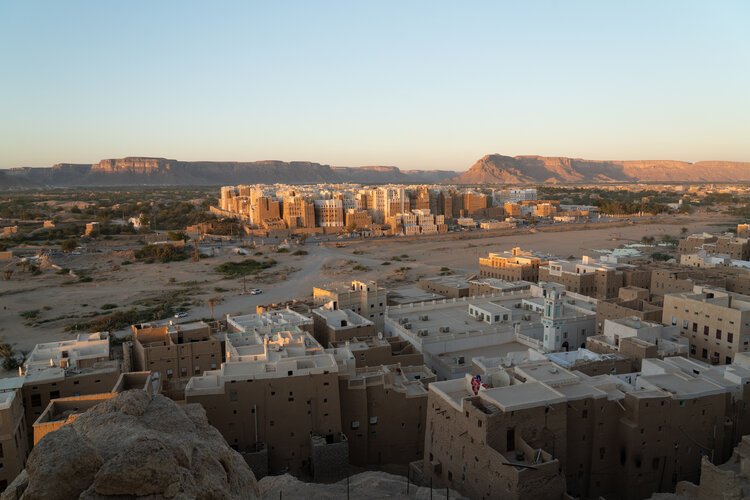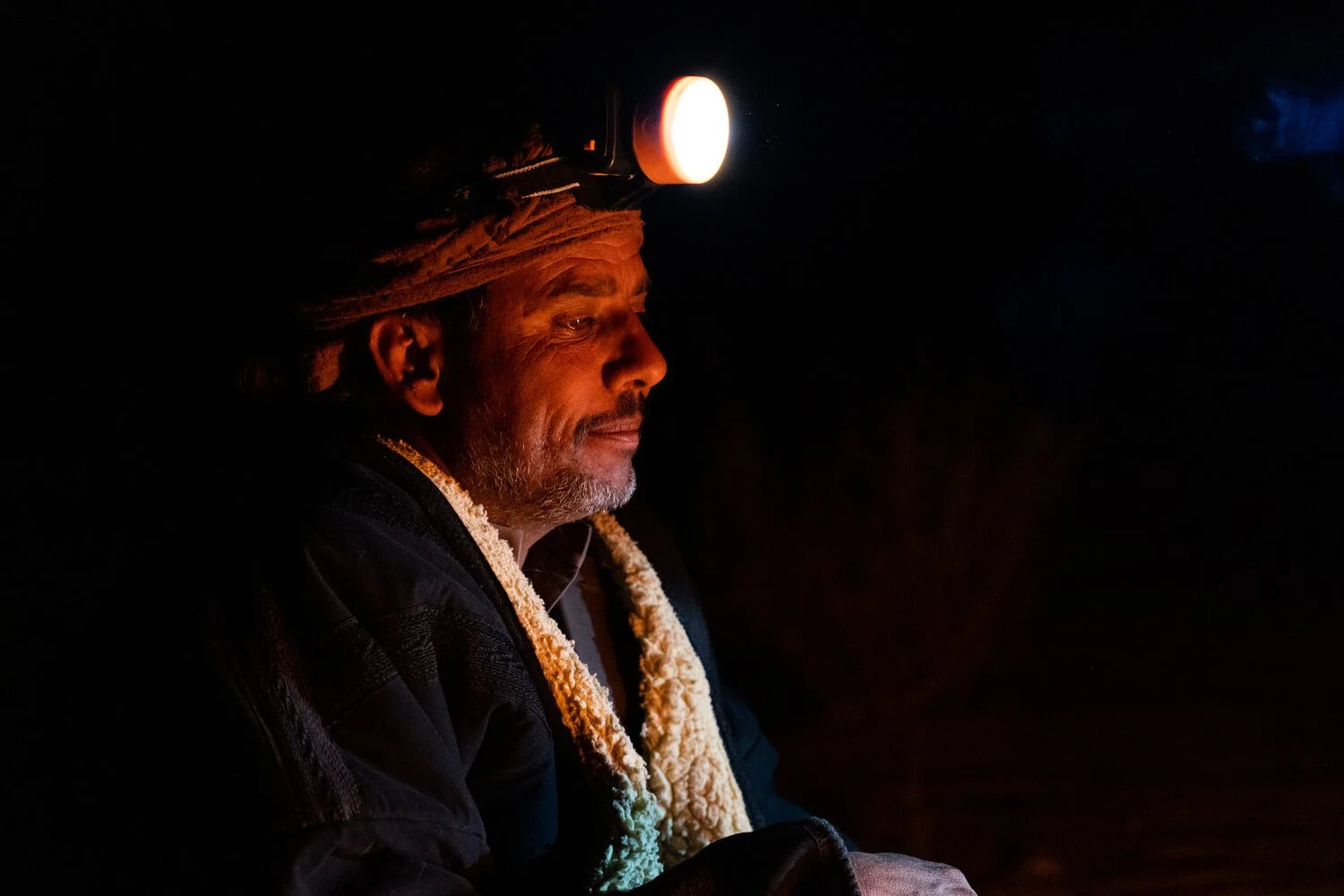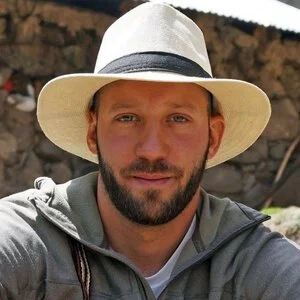Yemen Through the Lens with Nicole Smoot and Matt Reichel
Yemen Through the Lens is a joint photo series produced by photographers Nicole Smoot and Matt Reichel. The following images were all taken in February 2020 throughout Yemen’s Al Mahrah and Hadhramaut regions.
Yemen is a place we can come back to again and again and always find something strikingly beautiful. Yemen’s people, architecture, culture, history and mountains are stunning, complex and diverse, and while stories of war, tragedy and terrorism have occupied media headlines for the past decade, there is a different, very human side to Yemen. This is what we are trying to show with this series, Yemen Through the Lens, scenes of everyday life in Yemen that honour Yemen’s people. Learn about the photographers here.
Cover image: The first rays of sunlight illuminate the village of Haid Al Jazil at dawn. This village, perched on a rock in Wadi Doan (Wadi Dawan) is home to only a few remaining inhabitants, as many homes now sit empty. However, its beauty is unmatched throughout the valley.
Photo by Matt Reichel.
Above: Teenage girls pose for a photo at the Girls School in the village of Sif in central Yemen’s Hadhramaut region. After reaching puberty, girls’ school uniforms include a black abaya, white hijab and black niqab.
Photo by Nicole Smoot.
Above: The town of Al Hajrain at the northern end of Wadi Doan consists of tightly packed mud-brick high-rise buildings. A camel grazes on shrubs in the valley surrounding the village.
Photo by Matt Reichel.
Above: A family of Mahri Bedouins milks their camels as the sun begins to set. This family lives on the southern fringes of the Empty Quarter Desert near the border between Yemen and Oman. During the day, the men tend to the camels, as they require a lot of grazing land amongst the scrub brush, while the women and children stay with their goats in the town of Haht. Camel milk is highly nutritious and tastes much like cow milk.
Photo by Matt Reichel.
Left: Hadhrami men play a game of dominos inside the walled city of Shibam. They sat here drinking tea, chatting and playing for hours, as goes the relatively slow pace of life for men in the Hadhramaut.
Photo by Nicole Smoot.
Above: Thumbs up from the driver after finishing milking the camels in Yemen’s Empty Quarter Desert. Pick up trucks are used throughout the empty quarter to transport supplies and water to the camels. In the evening, the camels are rounded up and kept in pens to sleep. In the morning they are released into the desert to graze on bushes.
Photo by Matt Reichel.
Above three images: The narrow streets of the walled city of Shibam in the Hadhramaut Valley are incredible to wander through. Children play in the alleyways, goats roam freely, mud-brick buildings rise up to eleven stories in height, and artisans go about their daily life in their workshops.
Photos by Nicole Smoot.
Above: A Mahri bedouin elder feeds some of the milk he has just collected to a baby camel. Baby camels are soft and curious, and they have a voracious appetite as they grow quickly into full-sized adults.
Photo by Matt Reichel.
Above: This shop is full of shoes and clothing in the city of Al Ghaydah. Al Ghaydah is the largest city in Yemen’s Al Mahrah region and functions as a border town, as it lies only two hours from the Oman border. Many people from across Yemen fled to the city during the outbreak of war, as such the city experienced a sort of economic boom.
Photo by Nicole Smoot.
Left: Bedouins make a fire in the Empty Quarter Desert. The man on the far left has a stick in his mouth called a miswak. This is a traditional teeth cleaning branch from the Salvadora persica tree used throughout the Arabian Peninsula. It is reputed to have been used for the last 7,000 years.
Photo by Matt Reichel.
Above: Dressed in a winter robe, a Yemeni Bedouin man prepares for sunset prayers in the Empty Quarter Desert. The Mahri bedouins are quite conservative and follow a tribal culture throughout the desert regions of northeast Yemen. This means prayers five times daily and strict separation between men and women.
Photo by Nicole Smoot.
Above three images: Life in Yemen’s Empty Quarter desert consists of animal husbandry (specifically for camels and goats), strong family and tribal bonds, and cold nights under the stars.
Photos by Nicole Smoot.
Above: Young men gather for soccer games in the town of Al Khuraibah on the southern side fo Wadi Doan. Soccer is an incredibly popular game throughout the Hadharamaut and you can see tons of young men appear with soccer balls between Asr and Maghrib prayers.
Photo by Matt Reichel.
Above: A father and son sell Qat from the back of their van in Wadi Doan. Qat plays a prominent, albeit controversial, social role for men throughout Yemen. Qat contains the alkaloid cathinone, a stimulant, which is said to cause alertness, talkative behaviour, mild excitement, loss of appetite, and euphoria, much like a strong coffee and then some.
In Yemen, Qat chewing has a history as a social custom dating back thousands of years and most men start chewing sometime after lunch and continuing long into the evening.
Photo by Matt Reichel.
Above two images: Shibam, a walled city of mud high-rises is stunningly beautiful, and a remarkably well-preserved example of Hadhrami architecture. Shibam is a UNESCO World Heritage Site, but threats persist.
Al Qaida in the Arabian Peninsula unsuccessfully tried to take over the city in 2016, resulting in an attack on a military check post just outside the town, and terrorist activities against tourists have occurred, most notably an attack in 2008 on a group at the lookout point that resulted in several deaths.
Floods and building degradation also pose threats to the town, as it is still very much active with upwards of 7,000 inhabitants. Today it is in a state of recovery as tourism very slowly returns to the Hadhramaut.
Photos by Matt Reichel.
Above: Curious locals peer out from their windows in the town of Shibam. The cloth coverings on the windows provide cover for women while allowing them to also look outside of their homes. Traditional wooden frames are still used on many of the town’s mud buildings.
Photo by Matt Reichel.
Left: A man peers into the camera while on the streets of the town of Tamlah in Wadi Doan. This bustling little market town stretches both sides of the Wadi Doan highway, making it a draw for locals from the surrounding villages to do some shopping and car repair.
Photo by Nicole Smoot.
Above: A portrait of a Mahri bedouin man with a headlamp sitting around the fire in the Empty Quarter Desert.
Photo by Matt Reichel.
First image above: A group of young girls beg for money at the side of the road on the main highway in the Hadhramaut Valley. These girls live in a makeshift camp not far off the road, having arrived in the Hadhramaut from the Red Sea region of Yemen sometime after the war broke out in 2015. Communities of people from the Red Sea region can be found now throughout Yemen, mostly begging on the streets in a state of desperation, as their home areas have been cut off from goods and supplies as a result of the Saudi blockade.
Photo by Nicole Smoot.
Second image above: Schoolgirls from the village of Sif in Wadi Doan wave through the windows of a classroom.
Photo by Matt Reichel.
Above: Mud bricks are the key foundation of construction in Wadi Doan and have been for centuries. Made by hand in the valleys, as this man is doing, they are moulded and then dried by the heat of the sun. As a brickmaker, he can earn about 9,000 Rial per day (around $14 USD), which is enough to feed his family, but do little else. Behind him lies the city of Al Hajrain, constructed largely from the very bricks he is making.
Photo by Matt Reichel.

